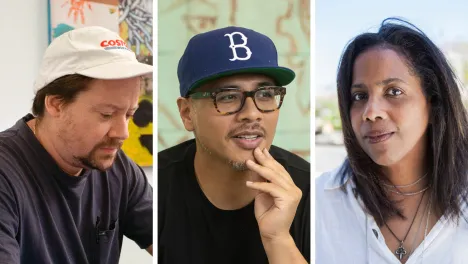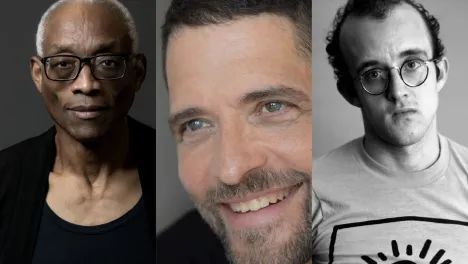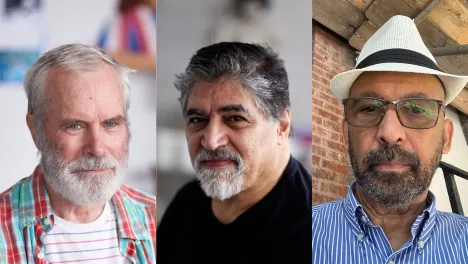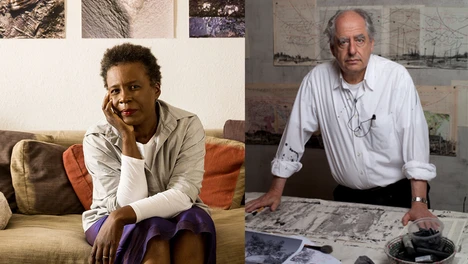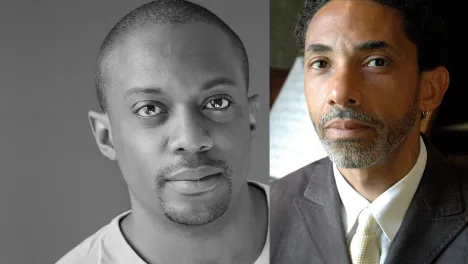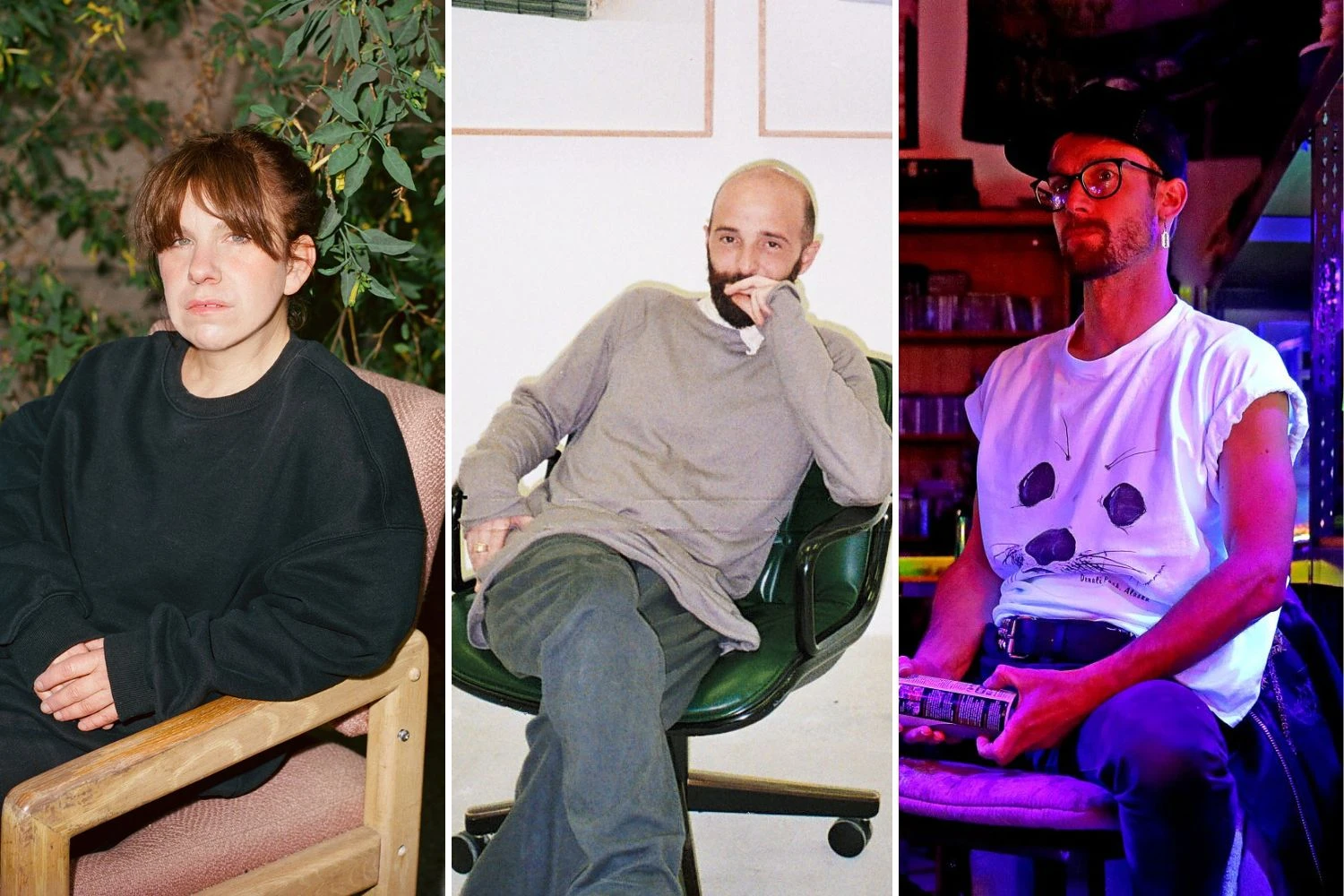
The Un-Private Collection: World Building—Samara Golden + Piero Golia + Max Hooper Schneider
Overview
In conjunction with the special exhibition, Robert Therrien: This is a Story, The Broad is organizing two discussions to contextualize today’s L.A. sculptors as part of a storied history. The starting points for these discussions are two connected yet contrasting topics: Distinct Encounters through Object Making and World Building.
Saturday, November 22, 2025: World Building
Friday, February 27, 2026: Distinct Encounters through Object Making
Los Angeles has been the home of important, ambitious sculptors for decades. The city has long been a place where art mixes freely with architecture, aerospace, and other cutting-edge industries, Hollywood, communities, countercultures, and undergrounds. L.A. sculptors have intersected with global movements including Minimalism, Light and Space, Land Art, and Assemblage, and have incubated hybrid, experimental practices that have run against the grain of global trends.
Building on a legacy that includes artists like James Turrell, Robert Irwin, Noah Purifoy, and Helen Pashgian, World Building as a practice has a vibrant and visible presence in contemporary Los Angeles sculpture. The Broad’s World Building program features three Los Angeles-based artists known for their ambitious sculptural environments—Samara Golden, Piero Golia, and Max Hooper Schneider. Often, artists who work in the spirit of World Building pursue any medium and any method to give their vision life, crossing many disciplines, and, at times, producing work that is difficult to classify as sculpture at all.
Distinct Encounters through Object Making will take place during Frieze Weekend in February and will consider sculpture that invites focused, isolated encounters with viewers, while World Building looks at sculpture as an immersive, often communal experience. Both discussions align current sculptural practice in L.A. within its history, its capacity for production and fabrication, and the city’s inspiration as a muse.
ARTISTS
Samara Golden’s practice imagines architectural spaces—rendered seemingly infinite through the use of mirrors—sometimes populated with the remnants of (traumatic) human interactions. Often described as “impossible spaces,” her structures oscillate between intricate and intimate domestic environments set within soaring, anonymous office buildings.
Piero Golia has situated sculpture within an array of social situations, from founding The Mountain School, to creating an environment to promote intellectual discussion in his Chalet Project, to interventions to public spaces. Golia often seeks to alter reality itself, using art to shift the expected conditions of cities, galleries, and events.
Max Hooper Schneider’s work imagines a world in which nature recuperates and re-processes the ruins that humans left behind. He is known for building futuristic yet plausible terrariums full of perpetually evolving biological matter, set on new hybrid paths of growth influenced by overwhelming pollution, overpopulation, and other possible catastrophes.
The conversation will be moderated by Ed Schad, Curator of Robert Therrien: This is a Story.
![]()
Image credits from left to right: Samara Golden by Maya Fuhr; Piero Golia by Luise Aloisi; Max Hooper Schneider, photo courtesy of the artist
Tickets to this event include same-day access to Robert Therrien: This is a Story, The Broad’s third floor rotating collection galleries, and The Shop at The Broad during regular museum operating hours, 10 am – 6 pm.
Tickets to this event do not include access to Yayoi Kusama’s Infinity Mirror Room—The Souls of Millions of Light Years Away (2013), which must be booked separately.
To learn more and plan your trip, visit Know Before You Go & FAQ. Visitor policies are subject to change.
Get TicketsBios
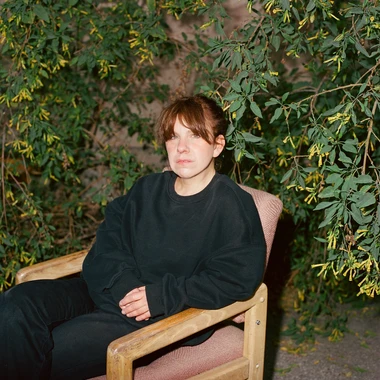
Samara Golden
Born in Ann Arbor, Michigan, in 1973, Samara Golden lives and works in Los Angeles. After receiving a BFA at the Minneapolis College of Art and Design, she earned an MFA at Columbia University in New York in 2009, then relocated to Los Angeles. In addition to if earth is the brain then where is the body at the Nasher Sculpture Center, Dallas, she has had solo museum exhibitions at the Fabric Workshop and Museum, Philadelphia (2020); Yerba Buena Center for the Arts, San Diego (2016); and MoMA PS1, New York (2014). She has also exhibited large installations in group shows including Dreamhome: Stories of Art and Shelter, Art Gallery of New South Wales, Sydney, Australia (2022); Psyche and Politics, Staatliche Kunsthalle Baden-Baden, Germany (2019); the 2017 Whitney Biennial, Whitney Museum of American Art, New York; Made in L.A. 2014, Hammer Museum, Los Angeles (2014); and Room to Live: Recent Acquisitions and Works from the Collection, the Museum of Contemporary Art, Los Angeles (2013), among others. Golden’s works are held in the collections of the Art Gallery of New South Wales; Whitney Museum of American Art; Los Angeles County Museum of Art; Museum of Contemporary Art, Los Angeles; Orange County Museum of Art, Santa Ana; Zabludowicz Collection, London; and Yuz Collection, Shanghai. In 2015, a monograph on Golden was published by MoMA PS1, and her work has been written about in publications including Artforum, Art in America, The New York Times, The New Yorker, and Mousse Magazine.
Photo by Maya Fuhr
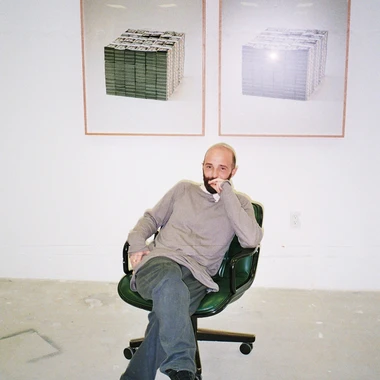
Piero Golia
Piero Golia is an Italian-born, Los Angeles-based conceptual artist known for his bold, often enigmatic projects that challenge traditional boundaries of art, performance, and audience engagement. Born in Naples in 1974, Golia emerged on the international art scene in the early 2000s with a reputation for turning ideas into actions that blur the line between reality and myth. Golia’s practice is defined less by medium than by attitude. He navigates seamlessly between sculpture, performance, and architectural intervention, using each as a vehicle for conceptual precision and poetic disruption. His works often take the form of orchestrated situations or systems—sometimes visible, sometimes elusive—that unfold over time. Rather than producing objects for passive viewing, he constructs frameworks for participation, perception, or narrative, inviting the viewer into a process that is as much about belief and imagination as it is about material form. A central figure in the Los Angeles art scene, Golia is co-founder of the Mountain School of Arts, an alternative, tuition-free institution that emphasizes dialogue and experimentation. Golia’s work entered esteemed public collections and have been exhibited at major museums, including the LACMA, MoCA, and the Hammer; Stedelijk Museum; MoMA PS1; Nasher Sculpture Center, MaXXi, and the Venice Biennale in 2004 and 2013.
Photo by Luise Aloisi

Max Hooper Schneider
Max Hooper Schneider (born Los Angeles, CA, 1982) graduated from Harvard University in 2011 with a master’s degree in landscape architecture. The foregrounding of material technologies and tactics of defamiliarization within the fields of biology, philosophy, landscape architecture, and varying subcultures continue to inform his polymathic practice. Hooper Schneider’s work develops and explores the aesthetics of succession, abandonment, and the uncanny through the creation of habitats and installations that materialize and dramatize nature in diverse ways with nature conceived as a process of ceaseless morphogenic modulation, a relentless onslaught in which bodies, as formed matters, are continuously created, transformed, and destroyed. The resultant work voids the difference between the natural and the artificial, challenges conventional systems of both scientific and artistic classification, upsets valuations of high and low culture and suggests a worldview that strives to dislocate humans from their assumed position of centrality and superiority as knowers and actors in the world. Obsessive travel, documentation and field work in distant regions, and the sacrificing of his own material compositions to environmental elements remain integral to his codex of artistic procedures. He continues to experiment across institutions, venues and outdoor sites locally and internationally and is held in major public and private collections around the world. Hooper Schneider lives and works in Los Angeles.
Photo courtesy of the artist
About The Un-Private Collection
The Un-Private Collection is an ongoing series of public programs The Broad began in September 2013. The series introduces audiences to the museum’s 2,000-work contemporary art collection by showcasing stories behind the collection, the collectors and the artists. Since launching the program, The Broad has brought together a variety of artists whose works are in the Broad collection in conversation with cultural leaders, including Mark Bradford with Katy Siegel, Shirin Neshat with Christy MacLear, Jeff Koons with John Waters, Takashi Murakami with Pico Iyer, Eric Fischl with Steve Martin, John Currin with James Cuno, Kara Walker with Ava DuVernay and architect Elizabeth Diller with Eli Broad, Joanne Heyler and Paul Goldberger. Talks have been held at venues throughout Los Angeles, making the programming available to audiences across the city. Conversations are live-streamed and full videos of past talks are available online. The Un-Private Collection series is part of the Broad collection’s 30-year mission to make contemporary art accessible to the widest possible audience.
Read More
